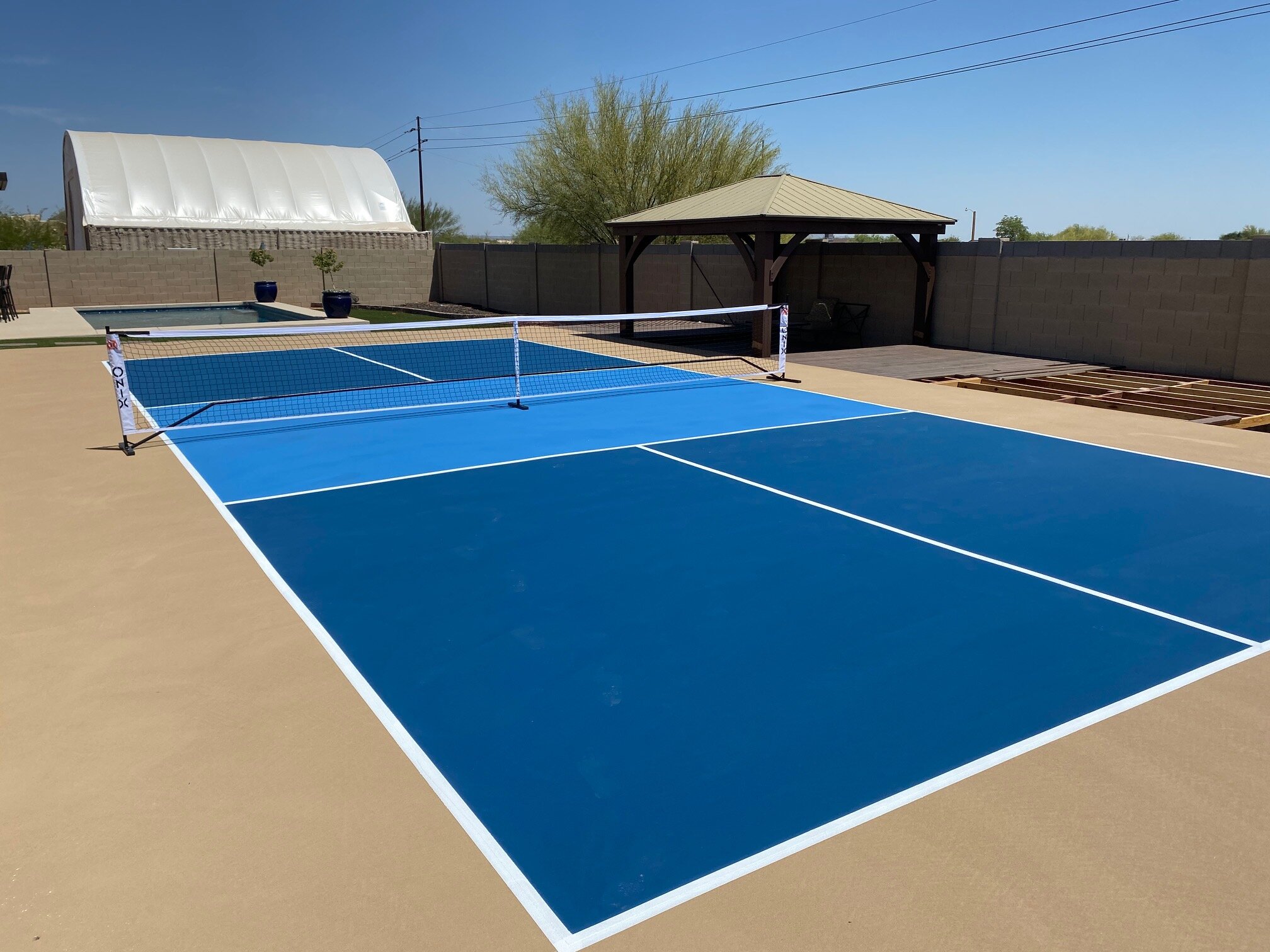Picking the right surface material for your pickleball court is really one of the first major decisions you’ll have to make while setting it up or upgrading it-your choice will determine your best floor as far as performance, maintenance, safety, and cost is concerned. It does not matter whether you want to design a regulation-size pickleball court or an outside-your-backyard pickleball court; knowing the many options of surfaces available for pickleball court surfaces is a vital point in helping you decide best.
Surface Materials Commonly Used on Pickleball Courts
There are various materials that can be used as surfaces for pickleball courts. Each of them has its own usefulness.
Asphalt: Though one of the cheapest surfaces, it is by far the most widely-used option of pickleball flooring. This has a firm and level surface where the construction, however, will demand the regular resurfacing of the pickleball court because of its wear and tear. While a cracking over time of the asphalt courts takes place, it could be said that they are somewhat easy to repair, making them a popular option for community courts.
Concrete: Typically, the cost for an acrylic pickleball court is higher than that for asphalt. Concrete, on the other hand, is characterized by a surface that is impeccable and durable with minimal maintenance. Concrete installation gives a long-term solution, making it ideal when regulation-size courts for pickleball are being constructed. These courts also provide a uniform bounce essential for competitive play.
Acrylic: High-performance acrylic courts are used for most of the high-performance games. It provides a smooth, cushioned surface that reduces the stress on players’ joints. Acrylic coatings are usually laid over a foundational asphalt or concrete layer and are durable in their bounciness and generally lower maintenance than asphalt courts.
Modular Tiles: These are great choices for price-economizing portable pickleball court flooring. Very easy to install, remove, or relocate, they serve well as makeshift courts. These modular tiles present such a uniform playing space; however, not so cheap, as those with a little higher price will charge more on materials and installation for the modular tile option.
Pickleball Court Surface Maintenance
This last principle or tip is sustaining the court’s lifespan. Proper maintenance will help a lot. The following are some surfaces and their maintenance requirements:
Asphalt: The surface should be checked regularly for cracks or holes, and should be resealed every few years. Several years of heavy use might lead to resurfacing of the pickleball court.
Concrete: Concrete courts do not need much maintenance, aside from occasional cleaning of the surface and filling cracks appearing from time to time.
Acrylic: The surfaces of the acrylic should be cleaned and swept often to prevent the dirt and debris from accumulating. Occasionally, repairs may be required where the surface is worn.
Modular tiles: Maintenance is simple; sweep with a broom or rinse with a hose, as they are portable and can be moved or stored away when not in use.
Cost Considerability
The price of a pickleball court depends on the material of the surface and the measurement of the court. In fact, the price of a concrete surface pickleball court will generally be on the higher side when compared to that of an asphalt-installed court. A pickleball court in the backyard, on the other hand, would cost comparatively less than a large regulation-sized court.
Pickleball court installation cost will vary with local labor rates and the intricacy of its installation, including any extra features like lighting or fencing if desired. The other option is more portable flooring for a pickleball court, which will have a more affordable initial cost but certainly not better durability compared to permanent surface options.
Conclusion
Pickleball Court flooring surface material selection will set the stage for a court based either on recreational or competitive needs. Durable low-maintenance asphalt and concrete are suitable for permanent courts, while modular tiles will work to give portable options for a pickleball court. The courts do require maintenance, as this is key to their condition, longevity, and safety for an exciting playing experience. Once you become familiar with the size guidelines for installing your pickleball court, surface options, and cost factors, you will have sufficient knowledge to make an informed decision for your budgetary implications and gameplay preferences.








